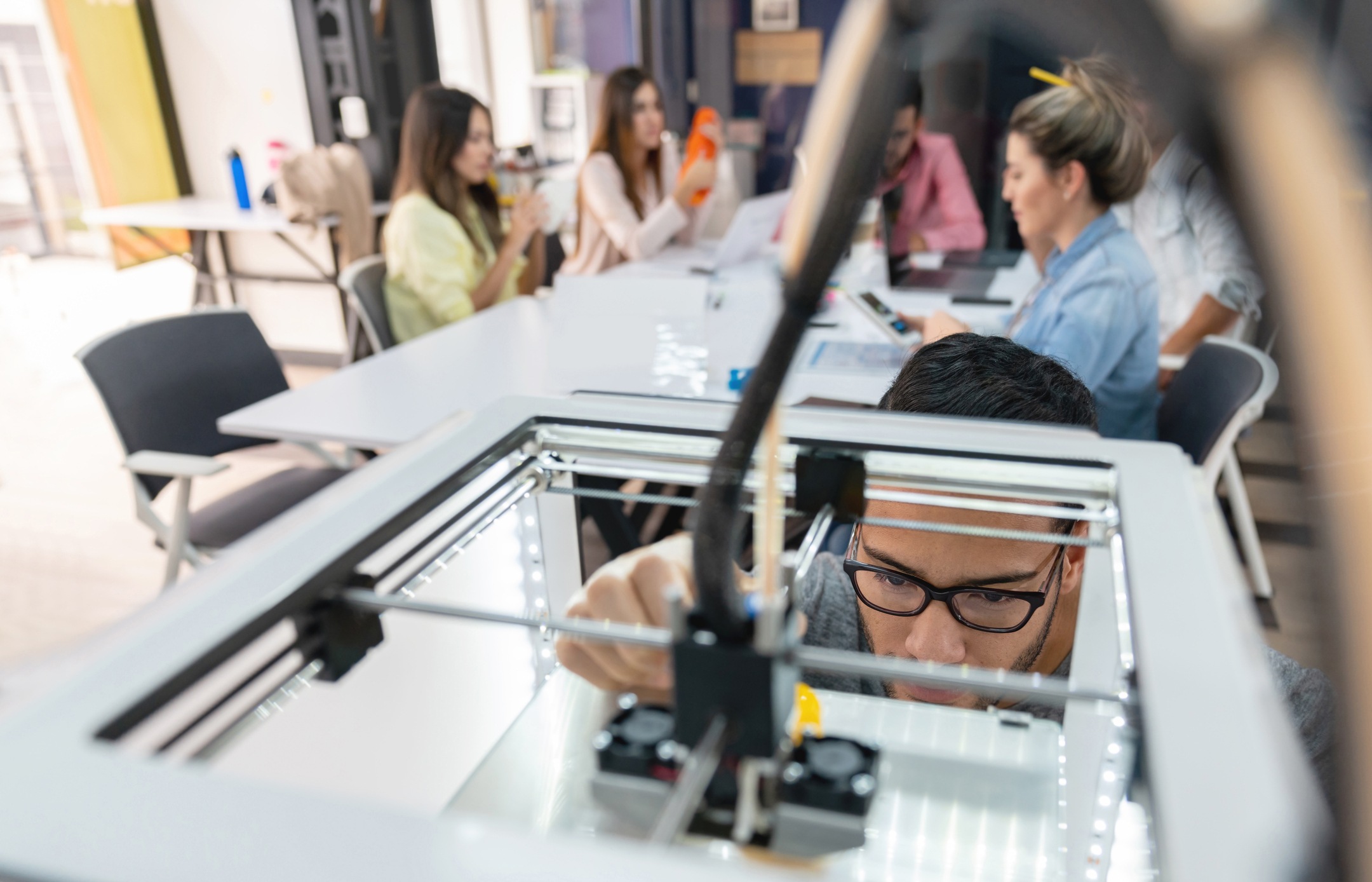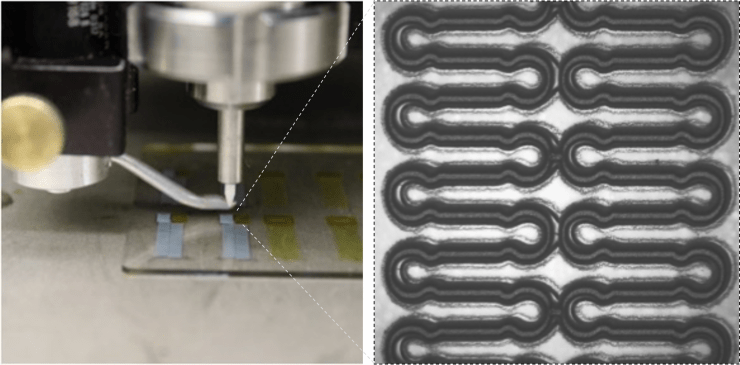
Researchers from Georgia Tech have recently developed a wireless, 3D printed sensor that can be implanted in the brain’s blood vessels to evaluate the healing of aneurysms. This sensor is stretchable and does not require batteries, optimizing its performance inside the human body. It is designed to be wrapped around stents or diverters that are implanted to control blood flow in the vessels damaged by an aneurysm. Their work was reported earlier this month in Advanced Science.
The Benefits of 3D Printing
Aerosol jet 3D printing techniques are employed to quickly create this stretchable sensor at low costs. The use of 3D printing allows the small electronic parts of the sensor to be made in one single step, simplifying the manufacturing process. The researchers believe this is the first instance of a stretchable, wireless, implantable sensor being made through aerosol jet additive manufacturing.
Additive manufacturing was essential in creating the sensor’s flexible electronic components. The aerosol spray technique used to make these sensors creates patterns as well, allowing for smaller feature sizes than the traditional inkjet printer.
“We can control the printing speed, the printing width, and the amount of material being jetted,” Yeo said. “The parameters can be optimized for each material, and we can use materials that have a broad range of viscosities.”
How the Sensor Functions
Currently, the healing of cerebral aneurysms is monitored using repeated angiogram imaging. In addition to being expensive, this technique requires the use of contrast materials that pose potential risks of harm to the patient as well. Using a wireless sensor that can be implanted in a blood vessel, however, would allow for more frequent evaluations that require no dye to be used.
To fit into the blood vessels, the stent/diverter that this sensor would be wrapped around will be less than 2-3 millimeters in diameter. This sensor is inserted with a catheter and uses inductive signal coupling to wirelessly detect blood flow characteristics that reflect aneurysm healing.

“The beauty of our sensor is that it can be seamlessly integrated onto existing medical stents or flow diverters that clinicians are already using to treat aneurysms,” explained Woon-Hong Yeo, an assistant professor in Georgia Tech’s George W. Woodruff School of Mechanical Engineering and the Wallace H. Coulter Department of Biomedical Engineering at Georgia Tech and Emory University. “We could use it to measure an incoming blood flow to the aneurysm sac to determine how well the aneurysm is healing, and to alert doctors if blood flow changes.”
The sensor is composed of biocompatible polyimide, two layers of mesh created from silver nanoparticles, a dielectric, and a soft polymer-encapsulating material. It uses a coil to collect electromagnetic energy released from another coil that is outside of the body. Blood that flows through the sensor experiences changes in its electrical properties, which changes the signals that pass through the sensor going to a third coil outside the body. In their experiments, Yeo and colleagues were able to measure changes in capacitance six centimeters away from a sensor that was implanted in meat to emulate the tissue of the brain.
“For patients who have had a procedure done, we would be able to tell if the aneurysm is occluding as it should without using any imaging tools,” Yeo said. “We will be able to accurately measure blood flow to detect changes as small as 0.05 meters per second.”
Yeo explained that the next step in developing their sensor is enabling it to measure blood pressure and flow rate in the vessel.
“We will be able to measure how pressure contributes to flow change,” he explained. “That would allow the device to be used for other applications, such as intracranial pressure measurements.”
Yeo expressed optimism about what the future holds for innovative technologies such as this sensor, saying that he and his team “are excited that people are now recognizing the potential of this technology.
“There are a lot of opportunities to integrate this sensing mechanism into ultrathin membranes that are implantable within the body,” Yeo concluded.
Implantable Electronics: A fully printed, wireless, stretchable biosystem that offers real-time monitoring of cerebral aneurysm hemodynamics #implant #monitoring – Learn more in: https://t.co/FNv2YynFyE pic.twitter.com/krkjh1oRCq
— Advanced Sci News (@AdvSciNews) August 9, 2019







 © 2025 Mashup Media, LLC, a Formedics Property. All Rights Reserved.
© 2025 Mashup Media, LLC, a Formedics Property. All Rights Reserved.